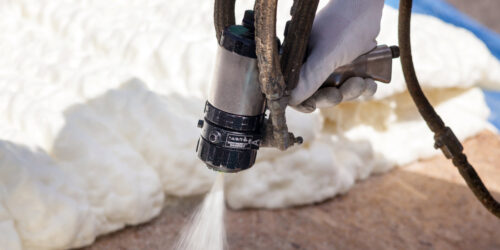Open Cell vs Closed Cell Spray Foam Insulation: What’s The Difference?
- High-performing insulation against heat loss
- More than 2 times as efficient as traditional insulation
- Lower energy bills, protect against environmental noise and cut carbon emissions
Spray foam insulation is the best type of insulation around but how do the two types of spray foam compare?
Though both open cell and closed cell spray foam insulation offer superb protection against heat waste as well as other benefits such as noise reduction, there are subtle differences between each that greatly affect which is best for your home.
Closed cell spray foam insulation is more robust yet open cell spray foam delivers excellent noise reduction and doesn’t run the risk of causing condensation problems. Both are of course, environmentally-friendly providing high-quality insulation which will endure for more than 30 years but this depends on you choosing the right type of foam spray for your property.
Able to knock hundreds of pounds off your energy bills whilst smashing your carbon consumption, it’s critical you know the differences between open cell and closed cell spray foam insulation so you understand which will work best inside your home. According to Green Journal, spray foam insulation offers up to 40% savings of energy expenses per month.
Let’s take a look at the advantages and disadvantages of open cell and closed cell spray foam insulation to assess which would be best for the type of property you have.
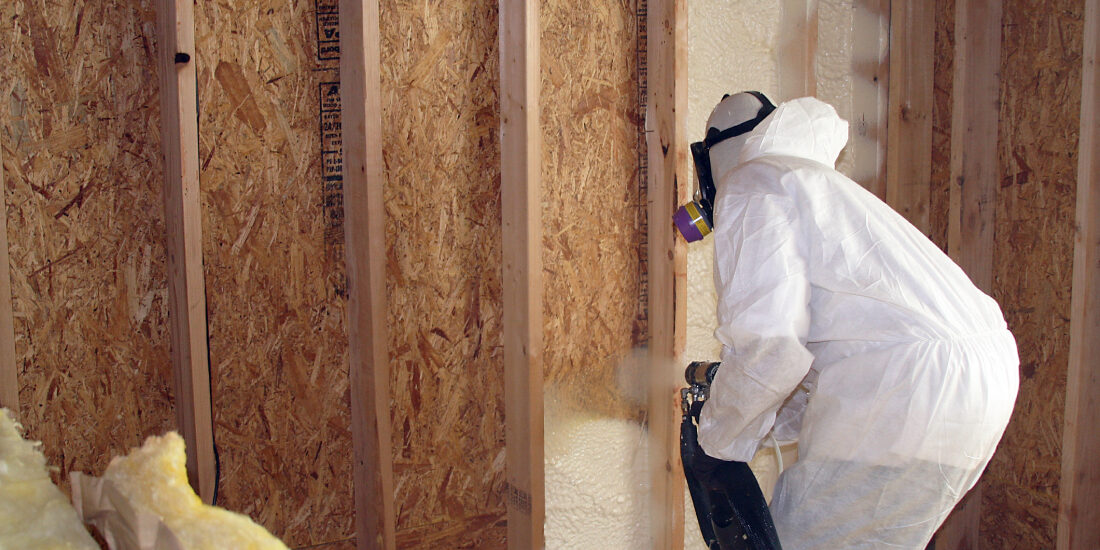
What's On This Page?
Click the links below and head straight to a specific section of the article.
What Is Open Cell and Closed Cell Spray Foam Insulation?
Open cell and closed cell foam are the two types of spray foam available for UK homes. Both types are made from a combination of polymers and urethane bonds that form a liquid plastic (polyurethane).
When mixed together, the two substances expand to fill any space, setting rapidly into a hard substance, which looks a bit like a cloud.
Able to cover gaps and holes in even the most awkward places, open cell and closed cell spray foam insulation forms a highly-effective, permanent barrier to heat. Depending on which type of spray foam you choose, you can also benefit from blocking out other substances, such as sound or moisture.
Requiring no maintenance, once installed, open and closed cell foam can last up to 30 years. Widespread use in manufacturing since the 1930s means polyurethane is a tried and tested insulator that’s safe and guaranteed to last.
Highly-resistant and hardwearing, polyurethane is perfect for insulating roofs, walls, floors and lofts- the tricky spaces where precious heat is easily lost.
In fact, according to Energy Saving Trust, as much as a quarter of heat is lost through the roof in an uninsulated home. As a result, roofs and lofts are the most common places to install open or closed cell spray foam insulation.
Significantly improving your energy efficiency by preventing up to 25% of the heat you’re producing leaking out through gaps and holes, it will take less energy to heat your home with spray foam insulation in place.
Lower energy use means reductions to your energy bills and carbon footprint, making open or closed cell foam insulation a highly beneficial investment.
Always ensure open or closed cell foam is installed by a qualified, BBA-approved spray foam installer. Never try to install spray foam yourself as you’ll put your health and property at risk.
What Are The Advantages and Disadvantages of Open Cell and Closed Cell Foam Insulation?
Heat Resistance: Closed cell foam has an R-value for heat-resistance that’s around twice as much as soft cell foam, coming in at around 6–7 per inch, meaning higher levels of insulation are provided by closed cell spray foam insulation.
Cost: Open cell foam is cheaper than closed cell foam but less dense. However, although open cell spray foam insulation costs less per square metre, you’ll need to apply more layers to achieve required levels of insulation so open cell foam may not work out cheaper and more profitable in the long run.
Density: Comprised of pockets of gases, closed cell foam forms a tighter barrier against heat loss than soft cell foam, delivering better insulation against heat loss.
Condensation and water-related problems: However, stronger resistance to heat loss means closed cell spray foam insulation also resists moisture. As a result, any space insulated with closed cell foam must be well ventilated to prevent serious damage from long-term condensation or water leakage problems.
Open cell foam, on the other hand, will allow water vapour to pass through whilst resisting mould. However, water travel is able to happen in both directions so if you want to prevent external humidity entering your home open cell foam won’t be effective.
Condensation issues caused by installing the wrong type of spray foam in your home can affect the structure as timbers underneath rot and weaken. This is one of the reasons why your open cell or closed cell spray foam insulation should only be installed by a professional spray foam installer.
Rigidity: Closed cell foam has a more rigid structure which tightly fills spaces making the structure of your home stronger, hence its higher resistance to heat loss. On the other hand, soft cell spray foam insulation expands more as it hits the surface, leaving a softer, more bubbly foam in place which is better able to reach tricky nooks and crannies.
The bubbles in open cell foam create a slightly more malleable texture. The benefit? If you happen to bang into the wall, you’ll appreciate the gentler surface!
Sound-proofing: Another benefit of open cell foam’s more bubbly texture is its resistance to sound.
Whilst open cell spray foam insulation has lower resistance to heat, delivering an R-value of 3.0–3.8, it does provide superb resistance to sound. The many open bubbles contained within the structure of open cell foam keep sound waves bouncing around inside them, preventing sound from being able to pass through.
High sound-resistance means open cell foam can be a great way to insulate against sound travelling from noisy spaces inside your home to other rooms in your property and neighbourhood.
Energy Company Obligation Scheme (ECO): Both open and closed cell spray foam insulation qualify for financial assistance under the ECO Scheme.
Administered by UK energy companies who have a duty to improve energy efficiency, financial help under the scheme is most frequently given to low income families or those classed as vulnerable. Financial support for loft insulation can be available if you qualify for a grant.
How Much Does Open and Closed Cell Spray Foam Installation Cost?
Whether your preference is for open or closed cell foam, your final costs will be affected by the size of your property, where you choose to install spray foam insulation and the depth required.
Costs per square metre for spray foam insulation come in at around £20–55 per m2.
Open cell spray foam comes in at the lower end of the scale because it’s less dense; however, that means you'll need more layers to achieve the required thickness. Closed cell foam costs are at the higher end of the scale, but you’ll use less of it because it's denser.
For a 3 bed semi-detached property, spray foam insulation costs would usually be around £2,500, but this depends on where you install insulation and the type of spray foam used.
Compare prices of open and closed cell foam costs vs traditional insulation costs in the interactive graph below.
Sheet insulation is usually used for loft conversions, and the spray foam costs vary depending on the thickness required. This can be between £20 and £30 for open cell and £40 and £55 for closed cell.
Learn more about insulation costs and how they compare in our guide or get a tailored quote from us in minutes for a clear idea of how much you’ll pay.
Open Cell or Closed Cell Foam Insulation - Which Is Best For My Home?
Though you may now have a personal preference for open cell or closed cell foam, the final decision about which type of spray foam insulation is best for your home will be made by your installer.
Though closed cell spray foam insulation provides the strongest resistance to heat loss, it may not be suitable for your property. That’s why before commencing any work on your home, your spray foam installer will carry out a thorough survey of your property.
Checking the quality of your existing insulation, condensation levels, the condition of the spaces where spray foam is to be used and more, your installer will be able to make an informed decision about which type of foam should be used.
Pre-empting any potential problems that could be created if the wrong type of spray foam insulation is installed, your professional installer will be able to tell you whether open or closed cell foam will be best to install in your property, the reasons why and how much it will cost.
Interested in getting it installed? Find out if your property is suitable for spray foam insulation.
If you'd like to know more you can get a free quote for installation and find the best spray foam installers near you. Spray foam is permanent so it's critical that installation is executed correctly.
Related articles
View all Insulation articles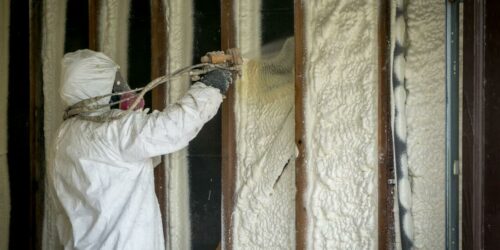
How Long Does Spray Foam Insulation Last?
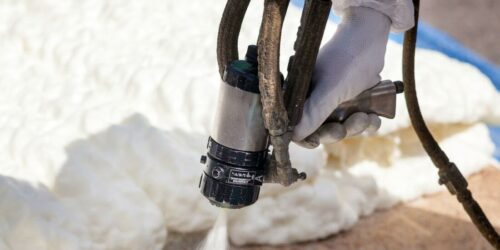
Can I Install DIY Spray Foam Insulation Myself?
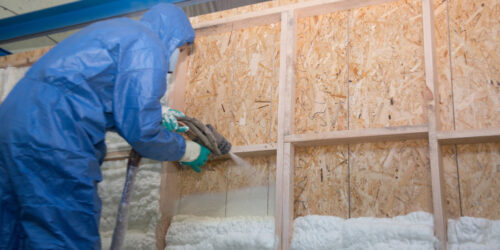
Six Benefits of Spray Foam Insulation
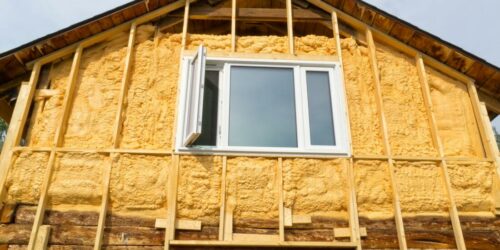
Is My Property Suitable for Spray-On Insulation Foam?
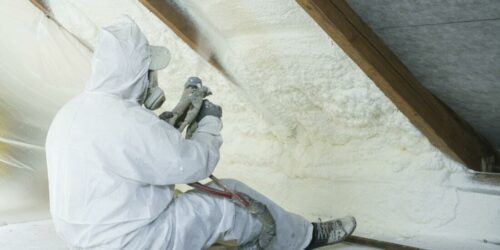
Why Consider Spray Foam Insulation in Roofs?
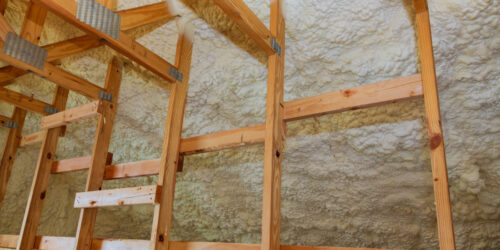
Icynene Spray Foam Insulation: A Complete Guide
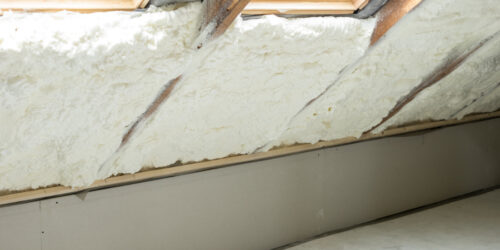
Spray Foam Insulation Installers: What to Expect
